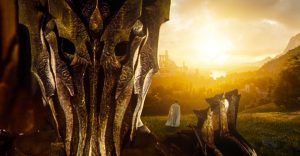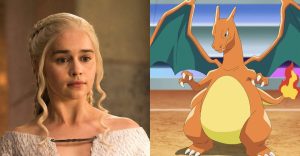Ragnarok Season 2: How Laurits’ Pet Sets Up The Show’s Ultimate Ending

Season 2 of Netflix’s Ragnarok ends with Laurits (Jonas Strand Gravli) releasing his pet serpent into the ocean, an act that perfectly sets up the show’s ultimate ending. Over the course of its two seasons, Ragnarok has cultivated a languid pace to build up to the Twilight of the Gods, taking its time to flesh out a modernized mythology and in-depth character motivations. The latest season of the Norwegian drama focuses heavily on Laurits’ true identity and how the weight of the truth results in shifting allegiances.
After much foreshadowing, it is revealed that Laurits’ biological father is none other than Vidar (Gísli Örn Garðarsson), the patriarch of the corrupt Jutul industries, who also happens to be a giant. Despite growing up in a loving familial environment, Laurits does not share the sense of belonging in the same way his brother Magne (David Stakston) does, which further fuels a crisis in identity. Upon learning the truth, Laurits is able to embrace his true self, which becomes possible after his powers as a half-giant are activated. However, Laurits is hurled into yet another emotional spiral when Vidar is accidentally killed by Magne during a fight.
As Laurits is, in fact, the trickster god Loki, a strain of ambivalence dominates his decisions throughout Ragnarok, making it difficult to gauge where his true allegiance lies. Having lost his true father and being shunned by Wotan Wagner, the reincarnation of the Allfather Odin himself, Laurits injects himself with the latter’s blood, hence fulfilling the prophecy of his half-giant, half-god nature. Soon after, Laurits is taken to the hospital for a tapeworm removal procedure, which is a modern retelling of the birth of Jörmungandr, or the Midgard Serpent. Deemed as of the most terrifying creatures in Norse mythology, Jörmungandr is a giant in the form of a mightly serpent, responsible for triggering Ragnarok, or the end of the world. Representing an ouroboros, Jörmungandr harkens cyclical violence, along with the themes of destruction and rebirth – a process that is triggered when the serpent uncoils itself and moves towards land.

As a means to cope with his mounting anguish, Laurits decides to keep Jörmungandr as a pet, although the snake is much smaller in size at the time. After being cornered by Fjor and Ran Jutul, Laurits offers them a critical piece of information: that he has access to a weapon that would ultimately lead to his brother Magne’s death. As Magne is a reincarnation of the thunder god Thor, mythology points at a fierce battle between him and the Midgard Serpent, which eventually ends with Thor vanquishing the snake and being killed in the process. While it is still unclear as to whether Laurits truly wants Magne dead or whether it was simply a ploy to keep the Jutuls from killing him, the act of releasing Jörmungandr into the icy waters of the lake in Edda at the end of Season 2 harkens the beginning of the end.
Although Ragnarokhas subverted certain notions whilst mythologizing gods and giants within a modern context, basic tenets of Norse mythology still apply to the characters, albeit in a slightly altered form. On following this strain, it is possible that at some point ahead in time, the rise of Jörmungandr will trigger the end of the world and eventually, the death of Magne. However, as destruction begets rebirth, is it possible for Magne to return as yet another reincarnation on Earth? Also, what kind of role will Laurits play in the wider scheme of things, and will he ever truly choose a side? These questions can only be answered by a potential Ragnarok Season 3, which will most likely delve deeper into the tussle between the old world and the new, and the gray areas wedged between them.
About The Author


















